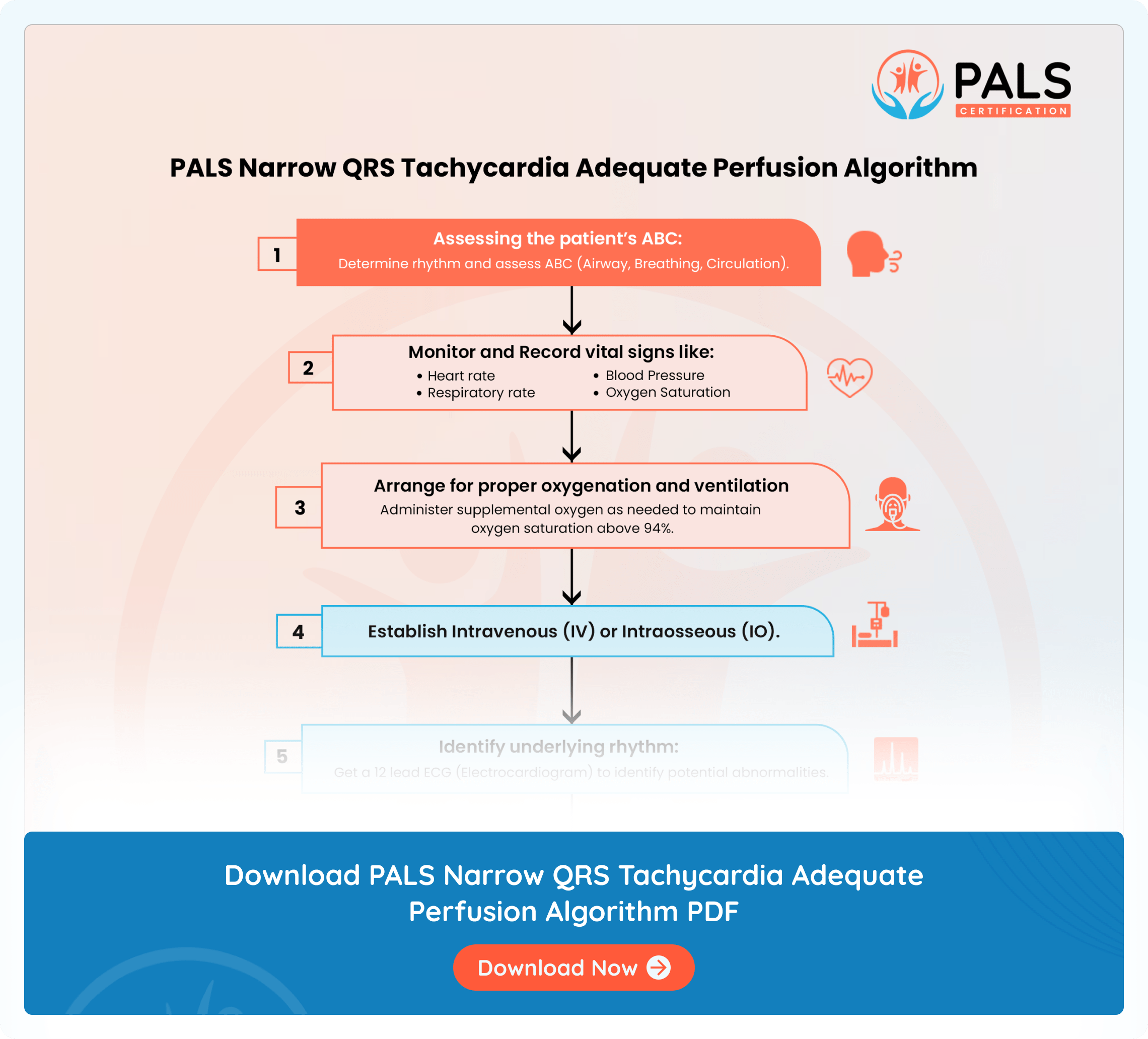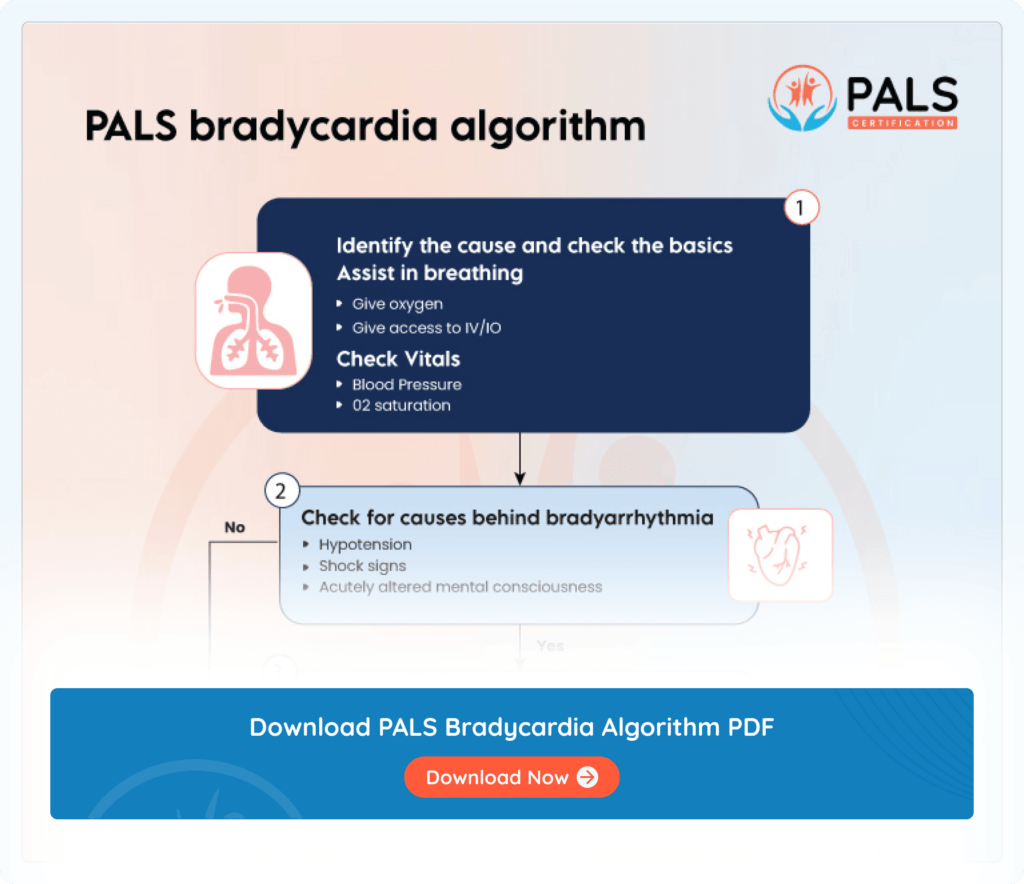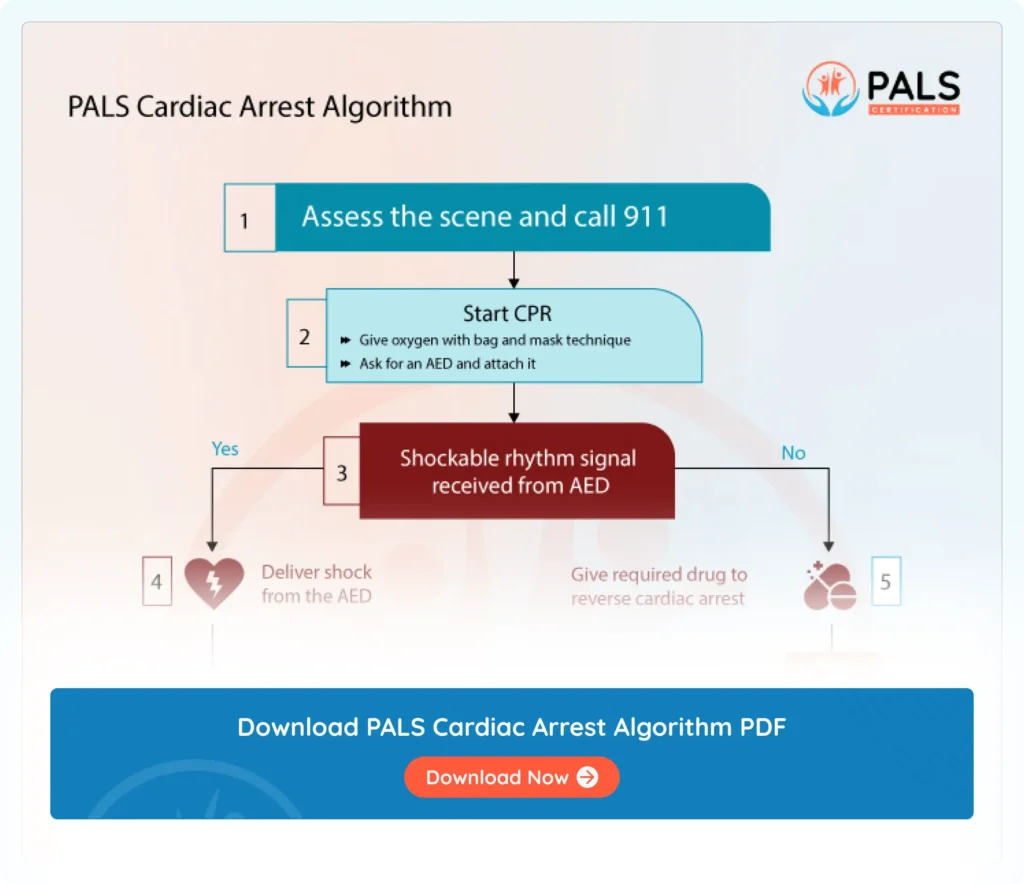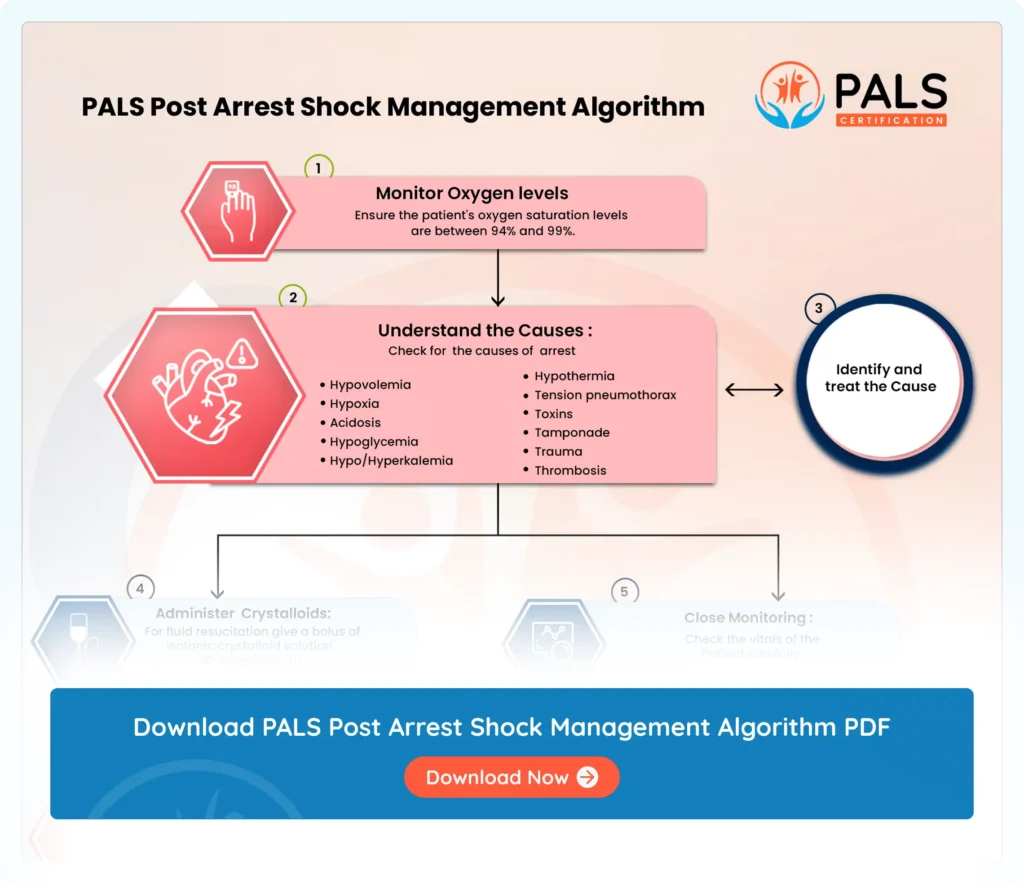- 4.0 - 8.0 CE Credit Hours
- For Pediatric Responders
- Includes Videos, Megacode Scenarios, Practice Tests & More
The PALS Narrow QRS Tachycardia Adequate Perfusion Algorithm offers a systematic approach for managing pediatric cardiac emergencies, ensuring effective treatment to maintain adequate perfusion in pediatric patients.
The PALS (Pediatric Advanced Life Support) algorithm for managing narrow QRS Tachycardia with acute perfusion is an indispensable part of emergency care in the pediatric healthcare setting. The algorithm enables primary responders to take a structured approach towards diagnosis and treatment of pediatric patients. It also simplifies pediatric assessment specifically for those suffering from a rapid heart beat with stable QRS complexes.

Online PALS certification and recertification
- Compliant with ECC and OSHA guidelines
- Nationally accepted course
- Available anytime, anywhere
- Earn CE credit hours
$199.00

Interactive Explanation Via Flowchart
- Assessing the patient’s ABC – Determine rhythm and assess ABC (Airway, Breathing, Circulation).
- Monitor and Record vital signs like
- Heart rate
- Respiratory rate
- Blood Pressure
- Oxygen Saturation
- Arrange for proper oxygenation and ventilation
- Administer supplemental oxygen as needed to maintain oxygen saturation above 94%.
- Establish Intravenous (IV) or Intraosseous (IO).
- Identify underlying rhythm-
- Get a 12 lead ECG (Electrocardiogram) to identify potential abnormalities.
- Look Out for these signs
- Hemodynamic Instability like altered mental status, poor perfusion, hypotension, signs of shock.
- Consider Vagal Maneuvers for patients with Supraventricular Tachycardia (SVT) like
- Carotid Massage
- Valsalva Maneuver
- Adenosine
- Administer adenosine in patients with stable narrow QRS tachycardia with Supraventricular Tachycardia (SVT).
- Initial dose: 1 mg/kg rapid IV push followed by a saline flush.
- Maximum initial dose: 6mg
- Consider Amiodarone or Procainamide
- Definitive Treatment
- Consider definitive treatment options such as catheter ablation, antiarrhythmic medications, or electrical cardioversion as appropriate
Key Points of PALS Narrow QRS Tachycardia Adequate Perfusion Algorithm
- Assessment: Initial evaluation of the child’s airway, breathing, circulation, and vital signs to determine adequate perfusion.(5)
- Identification: Recognition of narrow QRS tachycardia on electrocardiogram (ECG) (6) with consideration of underlying rhythms such as supraventricular tachycardia (SVT). (7)
- Vagal Maneuvers: Application of vagal maneuvers like carotid massage or the Valsalva maneuver as initial interventions for SVT if appropriate.
- Adenosine Administration: Use of adenosine as a diagnostic and potentially therapeutic agent (7) for stable SVT, with careful dosing and monitoring.
- Monitoring: Continuous monitoring of the child’s cardiac rhythm, vital signs, and response to interventions.
- Definitive Treatment: Consideration of definitive treatments such as catheter ablation, antiarrhythmic medications, or electrical cardioversion based on the underlying rhythm and patient’s stability.
- Continued Support: Provision of supportive care, oxygenation, and IV/IO access while reassessing and adjusting interventions based on the child’s needs.
Available Courses
PALS Certification and Recertification Online
ACLS Certification and Recertification Online
- 4.0 - 8.0 CE Credit Hours
- For Healthcare Professionals
- Includes Videos, Megacode Scenarios, Practice Tests & More
$119.00 $169.00
Get CertificateBLS Certification and Recertification Online
- 6.0 CE Credit Hours
- For Medical Fields
- Includes CPR & First Aid Bag-Mask Techniques
$36.95 $39.90
Get CertificateSources
- Wide QRS complex Tachycardia https://www.ncbi.nlm.nih.gov/books/NBK559054/
- Rapid heartbeat with stable QRS complexes https://www.healio.com/cardiology/learn-the-heart/ecg-review/ecg-topic-reviews-and-criteria/ventricular-tachycardia-review
- ABC’s of resuscitation https://journals.lww.com/ajnonline/fulltext/2011/01000/clinical_news__from_abc_to_cab_for_cpr.15.aspx#:~:text=ABC%20(airway%2C%20breathing%2C%20chest,read%20the%20changes%20at%20http
- Assessment of vital signs to determine adequate perfusion https://www.ncbi.nlm.nih.gov/books/NBK553213/#:~:text=A%20low%20volume%20pulse%20could,generally%20more%20than%2080%20mmHg
- QRS tachycardia on electrocardiogram (ECG) https://www.uptodate.com/contents/narrow-qrs-complex-tachycardias-clinical-manifestations-diagnosis-and-evaluation
- Supraventricular tachycardia (SVT) https://www.nhs.uk/conditions/supraventricular-tachycardia-svt/#:~:text=Supraventricular%20tachycardia%20(SVT)%20is%20a,some%20people%20may%20need%20treatment
- Use of adenosine as a diagnostic and potentially therapeutic agent https://www.ncbi.nlm.nih.gov/books/NBK519049/
- Safety and Efficacy of Intravenous Procainamide and Amiodarone in the Acute Treatment of Wide QRS Complex Monomorphic Tachycardias https://www.acc.org/latest-in-cardiology/clinical-trials/2016/07/21/15/23/procamio#:~:text=Interpretation%3A,patients%20with%20structural%20heart%20disease
- Supportive Care Post QRS Tachycardia https://my.clevelandclinic.org/health/diseases/17616-ventricular-tachycardia
All PALS Algorithms

PALS Bradycardia Algorithm
The PALS Bradycardia Algorithm is a systematic approach for managing slow heart rates in pediatric patients.

PALS Cardiac Arrest Algorithm
The PALS (Pediatric Advanced Life Support) algorithm is a standardized set of guidelines used in emergency medicine to manage pediatric cardiac arrest situations.

PALS Post Arrest Shock Management Algorithm
PALS Post Arrest Shock Management Algorithm outlines steps after ROSC for pediatric patients emphasizing critical interventions for stabilization


